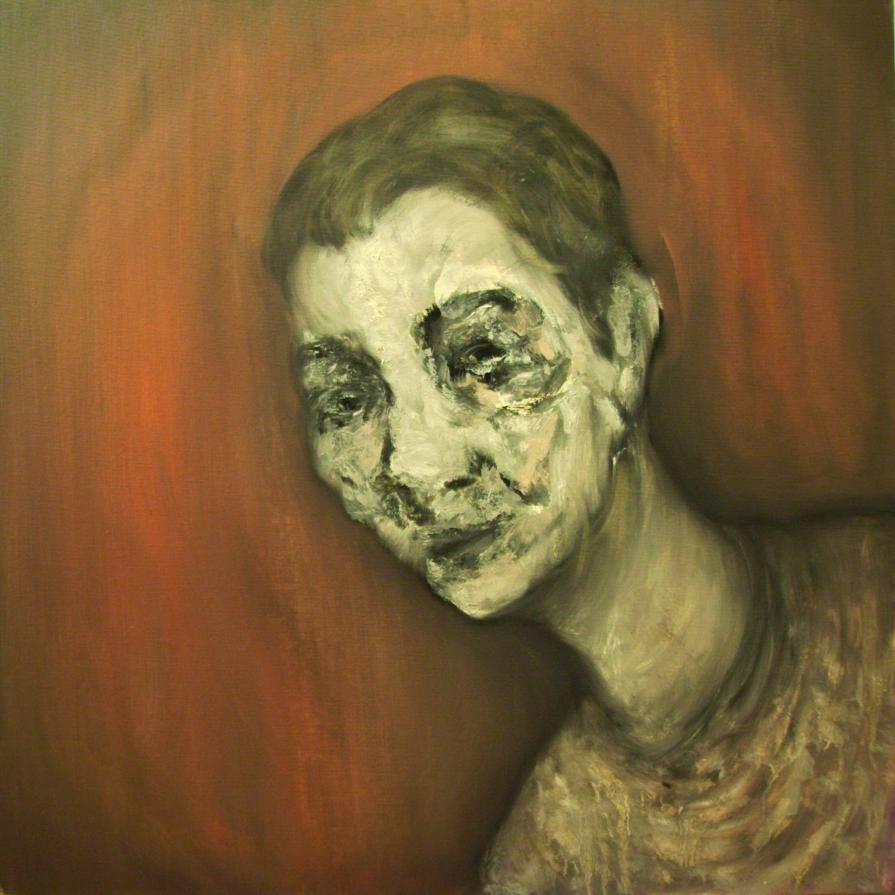Ritratto XVII
There is a painful form of painting that reflects itself in the tension of the forms with a sort of spasm that contracts the colour and makes the brushstroke disappear into a sedimentary texture or into a magma-like deformation. A universe of feelings and thoughts manifests in a sort of hyperbole of existence, in a concentration of painful and unbearable life. Almost as if every elementary particle of the painting becomes heavy as a stone, dense as pitch. Lorenzo Puglisi, although very young, practices a form of classical expression that we can call adult.
He not only prefers, among artistic genres, the portrait, but above all he confronts himself with those “genres”, those forms crystallized over centuries through reiterated teachings which have brought about some criteria of realization called canons. But Puglisi’s work is not about evading the furrow of tradition or denying it. Rather he is seeking to affirm the oneness of the self. The formula of the English philosopher G. Berkeley,“Esse est percipi”, is apt. The sense of his hard portraits, often unadorned, to the limit of consumption,it is really a principle of existence that cannot be denied(...)












Comments 3
Say something